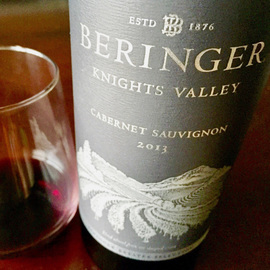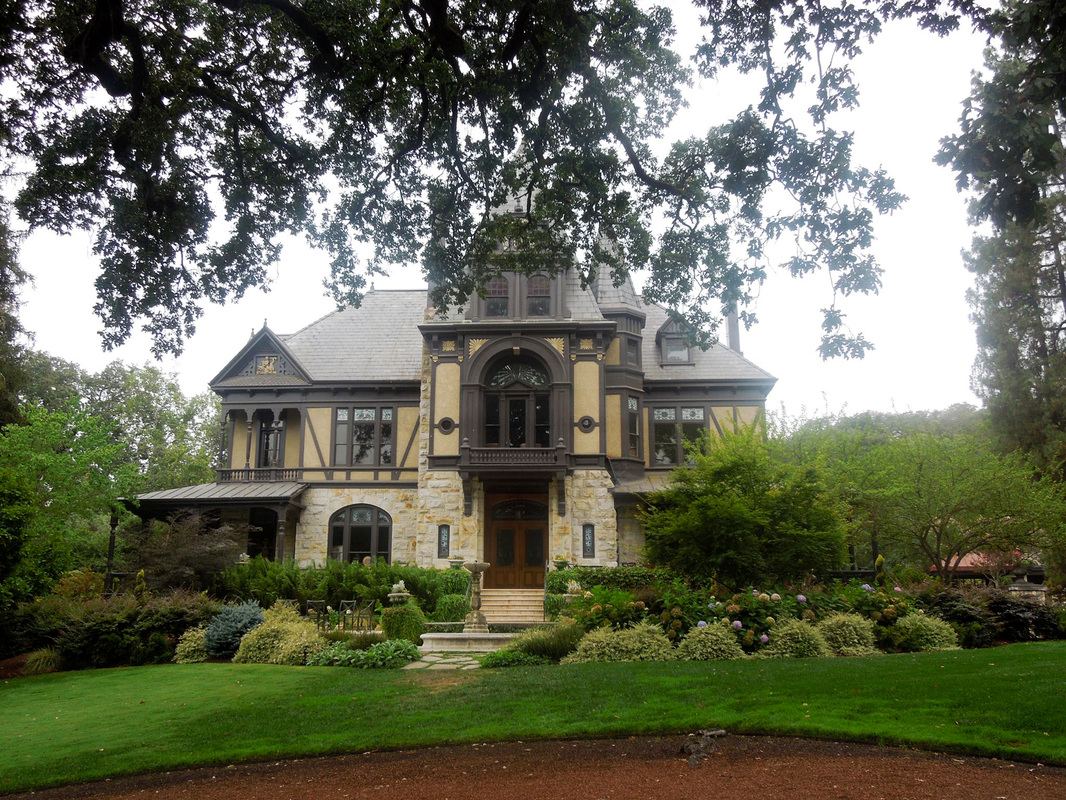|
Knights Valley is situated in the northeastern part of Sonoma County's wine appellations and is full of mostly grape-growers—one of whom has been growing and producing premier Cabernet Sauvignon from this area since the 1960s. This producer is none other than the well-known Beringer Vineyards. Their championing of the region and longtime commitment to growing grapes there helped the appellation gain its official status in 1983. In Knights Valley, the climate is very warm. It has the highest average summer temperature among all of Sonoma County's appellations. Don't let that fool you though, because the diurnal temperature range is also high, so the nights cool off considerably—allowing the grapes to rest from the heat and ripen slowly over the course of a growing season. I recently tasted Beringer Vineyards' 2013 Knights Valley Cabernet Sauvignon and was very impressed at how approachable the wine is in its youth. Also notable is the detectable restraint shown with new oak—this is not a Cabernet that is dominated by oak flavors, but rather, the oak nuances are softer and more integrated. 2013 is a vintage that has been highly-acclaimed by critics and winemakers alike, and as the wines are slowly finding their way into tasting rooms and homes of wine lovers, there is really no doubt that the excitement was fully warranted. A warm and dry spring led to pretty early bud break across the counties (both in Sonoma and Napa), and the steadiness of warm temperatures throughout the growing season led to excellent development for phenolic and physiological ripeness. Ask any winemakers and they will tell you what a warm, even-keeled year it was. Yields were high and quality was high—a win for both winemakers and consumers.  Beringer's Knights Valley vineyards span across approximately 600 acres and are planted to several varieties. The well-drained, cobbled alluvial soils are particularly suited to Cabernet Sauvignon, which makes up 89% of the 2013 expression—blending in 6% Cabernet Franc, 3% Merlot and 2% Petit Verdot in true Bordeaux-style fashion. The grapes and lots were harvested and vinified separately, before the final blend was made. Aged for 14 months in 23% new French oak, this Cabernet Sauvignon-dominated Bordeaux blend is a finely-fruited expression that possesses well-integrated oak nuances. To top it off, as Cabernet Sauvignon can be a varietal that needs ageing for its tannin to soften a bit, this bottling is extremely drinkable in its youth. Classic aromas of cassis and blackberry combine with raspberry and dark chocolate on the nose. There is a sense of warmed fruit here, both red and black, with a soft waft of spice in the background. That spice is present on the palate as well, with delicate spiced-raspberry notes, accompanied by blackberry and cocoa notes. The body leans to the medium side, soft and gentle, with slightly gripping tannin. As I noted before, the oak is very well-integrated, lingering just beneath the fruit on this very drinkable and enjoyable Cabernet Sauvignon. *Originally published on Feast it Forward.
1 Comment
Leave a Reply. |
Wine Blog Archives
December 2020
|
